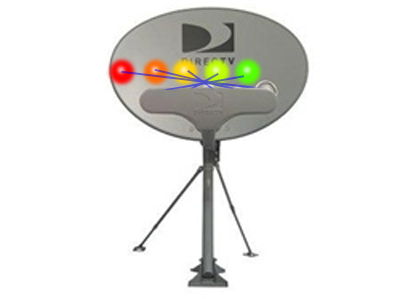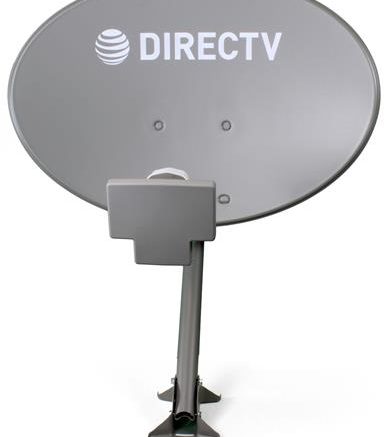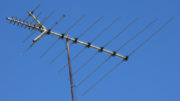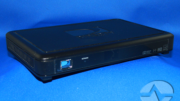Let me start this article by saying yes, I have talked about this before several times over the years. While I don’t think the DIRECTV dish is really unreasonably large, some people do. I get asked this question quite a bit by people who would like to stay with satellite TV but find the dish unsightly. So, it seemed like time to take a new look at the facts and give you another one of my patented predictions.
First, why is the dish so big?
DIRECTV dishes are a shade under one meter wide. That’s literally the largest they can be and still fall under the OTARD rule. What is the OTARD rule, you ask? It’s an FCC rule that says landlords, HOAs and condo boards can’t make you take an antenna down if it’s in a private space and it’s smaller than one meter in all directions.
The biggest part of a dish is the reflector. That’s the big dishy part on the back, in case you weren’t clear on that. That part gathers as much signal as possible and focuses it on the part in the front, referred to as the LNB. Search for these terms on this blog and you’ll learn an awful lot more about reflectors and LNBs, if you’re inclined.
A big reflector will generally take in more signal than a smaller one. In the case of the DIRECTV dish, however, most people don’t use the whole reflector anymore.
Why isn’t the whole reflector used?

What you see above you is an illustration I did about ten years ago. It shows how beams from the five satellite locations used at the time hit different parts of the reflector. It’s a little simplistic, but you get the point. The reason the reflector is an oval is that it was designed to aim at five different locations at once. Each location hits a different part of the reflector in a circular pattern. Because the circles overlap, you get an oval shape.
Today, DIRECTV no longer uses the 110 satellite location for US use. The 119 satellite location is still in use but only for a few people in limited areas. So, really, you just need to aim at three locations that are fairly close in the sky: the 99, 101, and 103 satellite locations.
So could dishes be smaller now?
It’s possible. Because of the way the beams line up, you could probably have a reflector that was smaller than 24″ wide and still get about the same amount of signal from the three locations in use. So, this brings up the question of why it’s not being done now.
Money, money, and money
Did you think it was any other reason? While the technology is certainly there, we’re not likely to see a smaller dish this year. Here’s why.
Reason #1: money
The first thing you need to be aware of is that it takes money to engineer a new dish. You need to design it. You need to test it. And, a factory has to be configured to make it. This all takes money.
Reason #2: money
I’m guessing that it would be possible to make a reflector even smaller and an LNB even more sensitive. This technology has been around for 30 years and you could absolutely make it better. But then, it wouldn’t be as cheap. Keep in mind that over 99% of the dishes used for satellite TV are given away for free. So, increasing the cost to make the thing isn’t in anyone’s best interest.
Reason #3: money
Satellite TV companies are very aware that they are perceived as overpriced. I try to show people that’s not true. You get a huge amount of entertainment from satellite TV, and it’s very fairly priced. But I can’t change the whole world. The average user of satellite TV pays well north of $110/month for the service, and they aren’t likely to tolerate much more for no reason. Cost cutting and optimization are the buzzwords of the industry now, to keep customers by keeping prices where they are.
All the time and effort of creating a new dish might please some people, but the extra cost would probably spur others to leave. So there’s really no motivation to do it.
What it all comes down to…
The current Slimline dish is here to stay. I’d be very surprised if it changes at all for a while. That’s good news if you have one, and even better news if you need one. You can get a futureproof dish, as well as everything else you need to live your best digital life, when you shop at Solid Signal.





